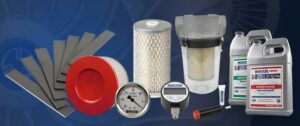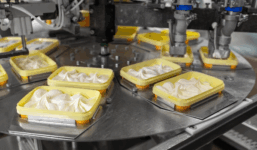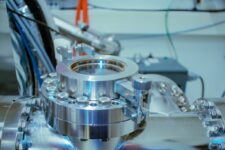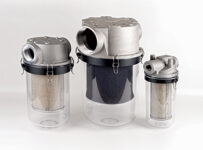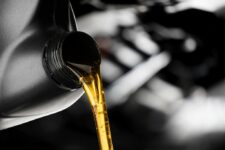Vacuum systems are integral to scientific laboratories and industrial operations, providing the suction needed for a range of critical applications. From educational and research institutions to businesses of all sizes, vacuum technology plays a key role in achieving research objectives and meeting production goals.
Leading suppliers like Becker Pumps are continuously innovating, collaborating with clients to address new challenges and develop customized solutions. Below, we break down the most common vacuum system applications in both laboratory and industrial settings, highlighting the types of vacuum pumps selected for each application. We’ll also explore six key advantages offered by top vacuum pump suppliers.
LABORATORY VACUUM SYSTEM APPLICATIONS
Dedicated point-of-use or centralized vacuum systems are now considered an indispensable part of any research or teaching laboratory bench. While specific uses vary, some of the most common uses include:
1. FILTRATION
Vacuum systems play a vital role in filtration applications within laboratory settings by accelerating and improving the efficiency of separating liquids and solids. A vacuum pump creates a pressure differential across the filter membrane. This pressure drop forces liquid through the filter more quickly and thoroughly than gravity alone. They’re commonly used for:
- Membrane filtration: Frequently used in chemical and biological labs for purifying solutions, sterilizing liquids, or analyzing water quality.
- Particulate removal: Used for the collection of particulate matter from liquid samples, a common requirement in environmental testing or quality control.
- Sample preparation: Prepares samples for further analysis by removing impurities or unwanted materials efficiently.
2. DEGASSING
Vacuum systems are widely used to remove dissolved gases from liquids or volatile compounds from materials. This is essential for improving the quality, consistency, and performance of samples and experiments. Here’s how vacuum systems are commonly used in degassing:
- Preparing solutions for analytical testing: Solutions for chromatography, spectroscopy, and other analytical methods are degassed to avoid gas interference.
- Sample preparation: Removes bubbles from liquids, preventing any impact on measurements or uniformity in processes like coating or film formation.
- Vacuum casting or polymer processing: Removes air trapped in resins or polymers to ensure uniform curing or material properties.
- Biological applications: Helps avoid bubble formation during cell culture or enzyme reactions, which can harm biological samples.
3. DRYING PROCESSES
Vacuum systems are critical for drying processes in laboratory settings, removing moisture or solvents from samples, materials, or equipment under controlled conditions. They’re used for:
- Sample preparation: Drying of glassware, materials, or chemical compounds so they are free of moisture before use in experiments.
- Freeze drying: Removal of water from frozen samples for long-term storage of biological or pharmaceutical products.
- Solvent removal: Eliminating residual solvents from chemical or pharmaceutical preparations.
- Material testing: Drying samples for accurate weighing or to assess moisture content.
4. CONTROLLED ENVIRONMENTS
Vacuum systems are often used for maintaining controlled environments in laboratories, particularly for sensitive experiments that require precise atmospheric conditions. Vacuum systems are essential for:
- Vacuum chambers: Used to simulate environments such as high altitudes or outer space for testing materials or equipment.
- Inert atmosphere creation: Vacuum systems are used to evacuate air before introducing inert gases like nitrogen or argon, producing a non-reactive environment for experiments involving sensitive chemicals or biological samples.
- Moisture-sensitive processes: Critical for experiments where even trace amounts of water vapor could alter the outcome, such as in spectroscopy or material synthesis.
- Cryogenics and low-temperature physics: Vacuum systems reduce heat transfer, maintaining ultra-low temperatures for experiments involving superconductivity or quantum mechanics.
Vacuum pumps are also used for aspiration, distillation, solvent recovery, instrument calibration, or simulating high-altitude environments in the lab.
Pumps like Becker’s oil-sealed, dry rotary vane, or hook and claw models are widely used because of their efficiency and reliability. Oil-sealed models are excellent for achieving deep vacuum levels required for degassing, while dry rotary vane and hook and claw models provide contamination-free operation for sensitive applications.
The gas ballast valves in Becker oil-sealed pumps also help handle vapor-laden air and prevent condensation inside the pump, ensuring longevity and reliability.
The following table illustrates the recommended pump type for several common laboratory applications.
| Recommended Pumps for 10 Common Laboratory Applications | |||
| Laboratory Application | Oil-Sealed Rotary Vane Pumps | Dry Rotary Vane Pumps | Hook & Claw Pumps |
| Vacuum-assisted filtration | ✓ | ✓ | ✓ |
| Degassing | ✓ | ||
| Drying processes | ✓ | ||
| Maintaining controlled environments | ✓ | ✓ | ✓ |
| Aspiration | ✓ | ✓ | |
| Distillation and solvent recovery | ✓ | ✓ | ✓ |
| Freeze drying | ✓ | ||
| Instrument calibration | ✓ | ✓ | ✓ |
| Controlled atmospheres for storage or inert gas purging | ✓ | ||
| Simulating high-altitude environments | ✓ | ✓ | |
INDUSTRIAL VACUUM SYSTEM APPLICATIONS
Vacuum systems are ubiquitous across a wide range of industrial applications, where they improve safety, accuracy, and productivity. Vacuum systems are also a critical part of today’s increasingly automated industrial workplace. Common uses of vacuum systems in industrial processes include:
1. MATERIAL HANDLING
Vacuum systems help to move and position materials in industries from CNC manufacturing to packaging and food preparation. They are critical where robotics is used to automate functions that previously required manual processing, allowing objects to be moved and positioned, faster and more accurately than with human operators. Vacuum systems are widely used for:
- Lifting, transferring, and transporting: Utilized for moving heavy or delicate materials like glass or metal sheets without causing damage.
- Positioning: Essential for accurately placing components in assembly lines or machining setups.
- Gripping and holding: Used to stabilize materials during processing, such as in cutting or welding operations.
2. PACKAGING
Vacuum systems allow industrial-scale packaging to be performed quickly and consistently. Key applications include:
- Vacuum sealing: Rapidly removes air from packaging to extend shelf life and maintain product integrity.
- Forming: Shapes packaging materials around products to ensure secure and protective containment.
- Pneumatic handling: Moves and places packaging materials like cartons and foam trays, reducing manual labor and enhancing speed.
3. MANUFACTURING
Vacuum systems create specialized low-pressure environments for industrial processes as well as negative-pressure clean room facilities for high-tech manufacturing. These include:
- Chemical processing: Uses vacuum for distillation or drying processes that require precise atmospheric control.
- Electronics manufacturing: Employs vacuum systems in the production of semiconductors and other sensitive electronic components.
- Food production: Requires vacuum for processes like freeze-drying, where maintaining product integrity and freshness is crucial.
4. CONTROLLED PROCESSES
Vacuum systems are mission-critical to managing the highly controlled environments needed for high-quality specialized production.
- Degassing: Removes entrapped air from materials, crucial in polymer and resin processing.
- Distillation: Facilitates the separation of mixtures through reduced pressure, important in chemical and pharmaceutical industries.
- Drying: Helps to remove moisture from materials, ensuring they are ready for further processing or packaging.
When thousands of dollars of production are on the line, it makes no sense to skimp on your vacuum pump technology. Industrial engineers and manufacturing managers everywhere prefer Becker Pumps for their efficiency and dependability, even in the harshest industrial environments.
Assess the specific needs of your application — whether it’s flow rate, depth of vacuum, or contamination resistance — and select a pump from our wide range that meets your precise requirements:
- Oil-sealed rotary vane pumps: Ideal for processes requiring deep and stable vacuum levels, such as chemical distillation or electronics manufacturing.
- Dry rotary vane pumps and hook and claw pumps: Provide oil-free operation, suitable for contamination-sensitive applications like food production.
- Modular and centralized systems: Offer scalability and efficiency for large-scale manufacturing setups.
- Energy-efficient technology: Reduces operational costs while helping to minimize waste.
The following table illustrates the recommended pump type for common industrial applications.
| Recommended Pumps for 13 Common Industrial Applications | |||
|---|---|---|---|
| Industrial Application | Oil-Sealed Rotary Vane Pumps | Dry Rotary Vane Pumps | Hook & Claw Pumps |
| Material handling: high vacuum, continuous | ✓ | ||
| Material handling: sensitive materials | ✓ | ✓ | |
| Packaging: vacuum sealing and forming | ✓ | ||
| Packaging: pick and place | ✓ | ✓ | |
| Manufacturing: chemical processing (solvent recovery, distillation) | ✓ | ||
| Manufacturing: chemical processing (handling and packaging) | ✓ | ✓ | |
| Manufacturing: electronics (vacuum deposition) | ✓ | ||
| Manufacturing: electronics (cleanroom conditions) | ✓ | ✓ | |
| Manufacturing: food production (meat packaging, freeze-drying) | ✓ | ✓ | |
| Controlled Processes: degassing | ✓ | ||
| Controlled Processes: drying | ✓ | ||
LAB & INDUSTRIAL VACUUM SYSTEMS: MAKE IT BECKER
Becker’s powerful, efficient vacuum pumps and systems provide the versatility and customizability you need to meet your specific industrial and laboratory needs. Key advantages of Becker vacuum systems include:
Versatility: Whether it’s industrial material handling, chemical processing, electronics manufacturing, or laboratory tasks like sample preparation, calibration, and vacuum-assisted distillation, there’s a Becker pump for your needs.
Customizability: Leading pump manufacturers like Becker offer precise, variable pressure management, contamination-sensitive operations, and flexible modular configurations for effective, cost-efficient operation now and into the future.
Efficiency: Modern vacuum systems are setting new levels of energy efficiency while accelerating core processes like material handling, drying, and degassing with consistent, repeatable results.
Scalability: From individual point-of-use pumps to full-scale centralized systems, the right vacuum equipment is ready to deliver today and grow with you to meet your needs tomorrow.
Responsibility: Our pumps help drive sustainability initiatives like carbon capture, solvent recovery, and waste minimization, so your operations go easier on our planet.
Becker Pumps is a global leader in providing powerful, dependable vacuum equipment. Ready to see what Becker can do for your laboratory or industrial operation? Contact us for a consultation, or click below to learn more about our broad range of industry-leading oil-sealed and dry vane vacuum pump solutions.

